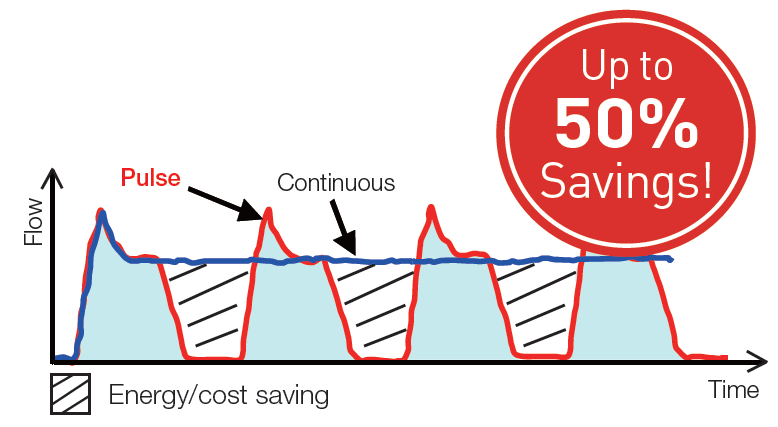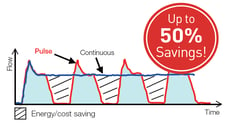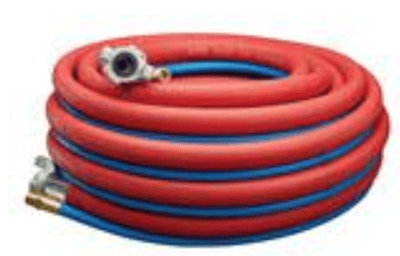Reducing Compressed Air Consumption in Blow Applications

Anyone running a pneumatic system knows that producing compressed air requires a lot of energy. In a typical pneumatic plant, 20 percent or more of the plant’s energy is consumed by an air compressor. As quoted in this MRO article, “Based on energy audits conducted by the U.S. Department of Energy, more than 95 percent of compressed air systems present opportunities for saving energy."
The energy associated with using compressed air can be reduced by increasing efficiencies in three areas:
- Compressed Air Production and Storage
- Compressed Air Distribution
- Compressed Air Consumption by Tools and Equipment
Compressed Air Production and Storage
- Set pressure to the minimum that will work for your application
- Use pressure differential sensors to monitor filter conditions
- Use zero loss air drains
Compressed Air Distribution
- Reducing Leaks
- Use leak free piping systems like Parker Transair
- Use fittings with factory pre-sealed threads
- Use products with wear compensated seals
- Reducing pressure drops in your system
- Use pressure differential sensors to monitor filter conditions
- Use air economizing vacuum generators
- Use reversed flow regulators
- Use straight fittings when possible instead of 45 or 90 shapes
Compressed Air Consumption in Blow Applications
- Use low flow air knives when possible (maximum efficiency in small areas)
- Use air amplifiers for targeted applications instead of increasing pressure throughout the whole system
- Use the lowest flow nozzle that will work for your application
Recently, Parker has introduced a new tool for reducing compressed air consumption in drying and blow applications called Air Saver. Air Savers come in several configurations and sizes – below is a quick overview with links to more details:
 |
|
An Air Saver is a valve that converts a continuous air blow to a pulsed air blow without the need for any other external control. Air Savers quickly cycle ON and OFF, creating a series of pulses. During the OFF cycle, there is no air consumption. Depending on your application, an air saver can save up to 50% of compressed air consumption compared to continuous blow.
Common Applications where using pulsing air instead of continuous blow can save air consumption include:
- Using compressed air for cooling applications
- Automotive spray painting applications
- Swarf removal
- Cleaning blow before assembly
- Liquid removal after manufacturing process
- Ionizer dust removal in semiconductor applications
- Assist blow along a production line, like in PET bottle manufacturing
- Air knife usage to separate sheets
- Many other applications - if you are using air blow applications, chances are you can reduce your compressed air consumption by using Air Savers
Depending on the module of Parker Air Saver selected, different adjustments are available for the ON interval, OFF interval or both. Options are available for applications with or without DC24V power availability. Modules can be quickly matched to your application based on your system pressure, air consumption and nozzle area. See our Quick Selection Page to help you select the right solution for your application.
 5.3 cfm |
 15.9 cfm 15.9 cfm1/8" Thread 29-101.5 PSI Pulse/Cont. DC24V ASC500 |
 15.9 cfm 15.9 cfm1/8" Thread 29-72.5 PSI Pulse/Cont. DC24V ASO500 |
 70.6 cfm 70.6 cfm3/8" Thread 0-116 PSI Pulse Pilot ASV2000 |
 176.6 cfm 176.6 cfm1/2" Thread 0-116 PSI Pulse Pilot ASV5000 |
 459.1 cfm 459.1 cfm1" Thread 0-116 PSI Pulse Pilot ASV13000 |
 529.7 cfm 529.7 cfm1-1/4" Thread 0-116 PSI Pulse Pilot ASV15000 |
 1,300 cfm 1,300 cfm1/4" Thread 50.8-116 PSI Pulse/Cont. For Hand Held HASV08R |
For technical questions specific to reducing compressed air consumption in your application, you may contact our Engineering Department.
Still not convinced?
See what others are saying about Air Savers- .





